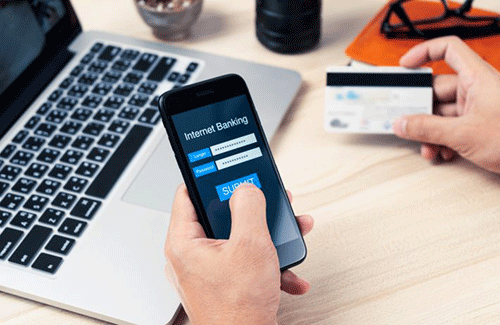As transformation in any social setting is enabled by “learning, unlearning, and re-learning”, modern culture is sustained by more advancements and developments which makes people to buy, sell, communicate from one place.
Modern life is fueled or enabled by advancement in technology and the internet, which paved the way for digitalization. We are now totally dependent on technology to have the “convenient life” we desire.
Using our smartphones or other devices, we are now able to enjoy a fully integrated mobile banking experience, which includes the ability to remotely open bank accounts, bank from virtually anywhere, buy items from anywhere in the world, or send money to any person without the need to ever visit a bank branch.
This is referred to as digitalization of banking, an overarching concept that includes digital banking & online banking. “Digital” is the new buzz word in the Namibian banking sector, with Namibian banks, as with international banks, having their focus on digitalization.
The history of banking can be traced to early traders and the introduction of coins as means of payment, with gold also being used. Banks were established to facilitate savings, which then evolved into trade facilitation through the introduction of payment instruments, the early example being cheques.
An early example of digitalisation is the introduction of ATMs around the 1990s, which allowed customers to have access to their savings anytime, at their convenience. The introduction of the computer in the 90s led to the introduction of the internet, which completely overhauled the banking system, as it paved the way for digitalization.
Coined with digitalisation in banking is the often talked about Fourth Industrial Revolution (“4IR”) in Namibia, which refers to the evolution of new technologies and artificial intelligence that are now at the forefront of economic development, thereby defining how we would live in future.
It foresees replacement of human capital with information technology, and artificial intelligence (machines, robots), the aim being to improve our way of living.
A Presidential Task Force on 4IR was appointed by President Hage Geingob to dissect 4IR and its benefits to Namibia, with the ultimate aim of focusing on digitalization to drive economic growth in Namibia.
The idea is to create an enabling environment to assist with the achievement of Vision 2030 through accelerated growth fueled by technology.
Also, the Bank of Namibia (“BON”) held a Symposium (on 02 November 2021) with banks on Digital Transformation, focusing on how Namibia could leverage from technology to restore economic growth. BON has established an in- house committee to spearhead digital transformation and innovation.
Digitalisation in the banking space must be understood to mean the complete digital transformation of banking systems, from back-end systems to front-end systems, thereby efficiently enabling the rendering of banking services through digital platforms to customers.
Digital banking refers to the user-friendly provision of digital banking products and services through different digital devices, for example, to enable either online banking (which is accessing a bank’s online platform to perform services such as account viewings, transfers from one account to another, E-wallet, Bluewallet, Easywallet etc); online shopping; online bookings; accessing other websites; or online payments of suppliers or service providers etc. Digitalization in the Namibian banking sector has the following practical implications and benefits:
rapid technological innovations & deployment to deliver more diverse banking services and product offerings;
small physical banking footprint as branchless banking is likely to be offered going forward, recent developments being the introduction of “digital bank accounts by Namibian banks;
larger digital footprint and reach which enables more Namibians to have more access to banking services, thus reducing the number of the unbanked population;
the roll-out of cheaper, fast and convenient banking services to customers; and
more integration with other platforms providing other services of interest to customers. The digital journey in the Namibian banking sector, while it remains ongoing, has reached a fair degree of maturity with all banks having a digital presence through online banking platforms which enables diverse and convenient product offerings such as viewing accounts, making transfers and or online payments, and sending funds to loved ones or creditors through the many “wallet” functionalities.
Customers must expect more and exciting developments in the banking digitalisation space.
*This opinion was authored by staff at the Bankers Association of Namibia (BAN) which was established in 1997 and incorporated as a section 21 company under the Companies Act as the representative trade association for the commercial banking sector in the country.
BAN members are Bank Windhoek, First National Bank, Nedbank, Letshego, Trustco Bank, Bank BIC, and Standard Bank.
Photo: Digital


